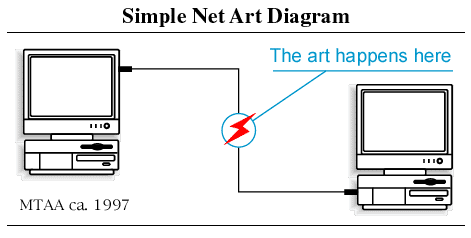Arshake is pleased to publish the third of seven appointments of an essay on thinking, poetry and writing in the technological era by Brunella Antomarini, Professor of Aethetics and Contemporary Philosophy at the John Cabot University in Rome. The essay originally appeared on the magazine “Smerilliana. Luogo di civiltà poetiche” (Pensiero poesia scrittura in feed back loop, in “Smerilliana”, n.17 2015, pp. 275-90), and it is here relaunched, translated into English.
Part I: Pensiero poesia scrittura in feed back loop [Thinking poetry writing in feedback loop], Arshake, June 7, 2018
Part II: Pensiero poesia scrittura in feed back loop [Thinking poetry writing in feedback loop], Arshake, June 14, 2018
(…)
Let us contract our thought still further, let us be serious (Lautréamont)
Any self-display is determined by the specific perception it elicits, as well as by that other side which remains in the shadow. We desire to appear as much as we desire to hide ourselves. In the digital culture, this has now become clear: the user surfs the Web and shows his own images. Even if he does so in words instead of images, these are nonetheless verbal self-representations. Currently, political action is the free ‘discourse’ that identifies the self-displaying individuals. But these are only seemingly discourses, which still retain a dark side and confer value to the surface.
It is obvious that writing is no longer a symbol of the voice, but is part of that pervasive theater of the world in which the actors are also the spectators.
Thought extracts itself from the brain and sets itself free in the mind. Hence it makes itself. The world it conceives is all contained in that act of self-making, in that always-tottering but ever-sought autonomy. Whereas the brain works chemically and electrically, thinking is a network of elements common to interconnected organisms that overlap, modify, and set mutual boundaries.
Writing is extracted from the world, as thought is from the organism and voice from the mouth. Dragged out of that theater, each emerges collected in an autonomous system. At this point, the metamorphosis of writing is fully displayed: it does not express thought, but is itself a specific form of thinking. When thinking is not formed in that autonomous system, then it is an intellective activity of conceptualization, directly linked to knowledge, objects, proofs, and conjectures and refutations. But in the network of connection, the intellective labor becomes unnecessary: it is the task of the scientific experiment, with its predictive power, that gives it pragmatic substance.
As already in Heidegger, thought in its emergent form offers itself to poetry according to a specific mode. Merleau-Ponty said that thought is bottomless, stands on no ground. We think only when we “make” thought, and we do so as we are writing. We really know what we are thinking while we are writing. Not only does the faster pace of typing make our thoughts and the words we are about to write faster, but at times it even precedes them. Our fingers are not very different from a car’s control system when they work in concert with our feet, as though our brain were an unnecessary guide. Or it is like the painter’s hand which waves in the air before the next stroke of paint (as in the famous slow motion film by Henri Campeux of 1949, showing Matisse painting). The technology of writing may seem irrelevant but in fact in pre-literate milieu thinking was something else altogether, something completely different, emerging from the technologies that allow it to do so.
Hannah Arendt makes a distinction between truth and meaning. Truth entails the paradoxical ‘truer and truer’, although it is not clear to what this progression should come closer (Arendt 57). People who think, instead, do not think the truth, do not ask themselves what that thing is, but ask what it means to be that thing and how it appears.

What do we think then? We think the miracle of contingency, that is, we think what a thing does ‘mean’, what its doing and undoing ‘mean’. We think how one thing can belong in a system that overlaps with another, held up by a network of transitions, and still have a meaning.
We let things cast their light on us, in their transitory and unnecessary way. But what does illuminates them in turn? Building on lines from Auden and Shakespeare (Arendt, 190, 213), Hannah Arendt refers to thought as to that which is fragmentarily brought back to life at any new historical turn. Not that thought is to be retrieved from those fragments but, rather, that it is to be taken into the space in between fragments. It is not a matter of details then, but of shattered pieces. Where any little whole crashes to pieces when it hits another.
The distinctive trait of a ‘poetics’ is in the way in which a line finds its place between the images. The poet’s voice is the effect of how a word is assembled with the next one, a line to the next one, an image to the next one. There, a minimal gesture makes the maximum of difference. There we find the same ineffable quality, the same non-intentionality that we see at play in the shift from stem cells to specialized cells, from a virus to a DNA micro-mutation, from bacteria to a symbiosis between bacteria. Life, that is ‘willing’ to be, is such despite any individual will.
What we write is something that is and that will eventually be different at the end of reading. In writing as technique there is a maximum of contingency that only thought can grant. Here, ‘to mean’ means to be free from the object of thought and the conceptual restrictions that identify it. “The meaning of what actually happens and appears while it is happening is revealed when it has disappeared” (Arendt I, 133). As Roland Barthes once wrote, to write is an intransitive verb.
(rif. citazione): Lautréamont, Maldoror (Les Chants de Maldoror). Trans. by Guy Wernham. New York: New Directions, 1965.
This is the third of seven installemnts of an essay on thinking, poetry and writing in the technological era by Brunella Antomarini that originally appeared on the magazine “Smerilliana. Luogo di civiltà poetiche” (Pensiero poesia scrittura in feed back loop, in “Smerilliana”, n.17 2015, pp. 275-90).
Part I: Pensiero poesia scrittura in feed back loop [Thinking poetry writing in feedback loop], Arshake, June 7, 2018
Part II: Pensiero poesia scrittura in feed back loop [Thinking poetry writing in feedback loop], Arshake, June 14, 2018
“Smerilliana” was first published by Enrico D’Angelo in January 2003, in the Marche region.It initially came out every six months. Later every volume of «Smerilliana» became a place of poetic civilisation, with the addition of the series “Poets of Smerilliana” and “Mosaic”. When it first appeared, Giovanni Raboni cited «Smerilliana» while writing in «Corriere della Sera», calling it the most open-minded and interesting poetry publication on the Italian scene. «Smerilliana» ideally continues the work of the literary biannual magazine «Plural» (founded and directed by D’Angelo in Napoli, between 1986-91), pursuing the pluralist outlook and style of the movement, as defined by the Orientalist Rahim Raza.
images: (cover 1): Jim Andrews, «Arteroids», 2001, snap shot from poetic video –game (2) Jim Andrews, «Arteroids», 2001, video documentation (3) MTAA Michael Sarff (M. River), Tim Whidden (T.Whid), «Net Art Simple Diagram», gif, 1997









































